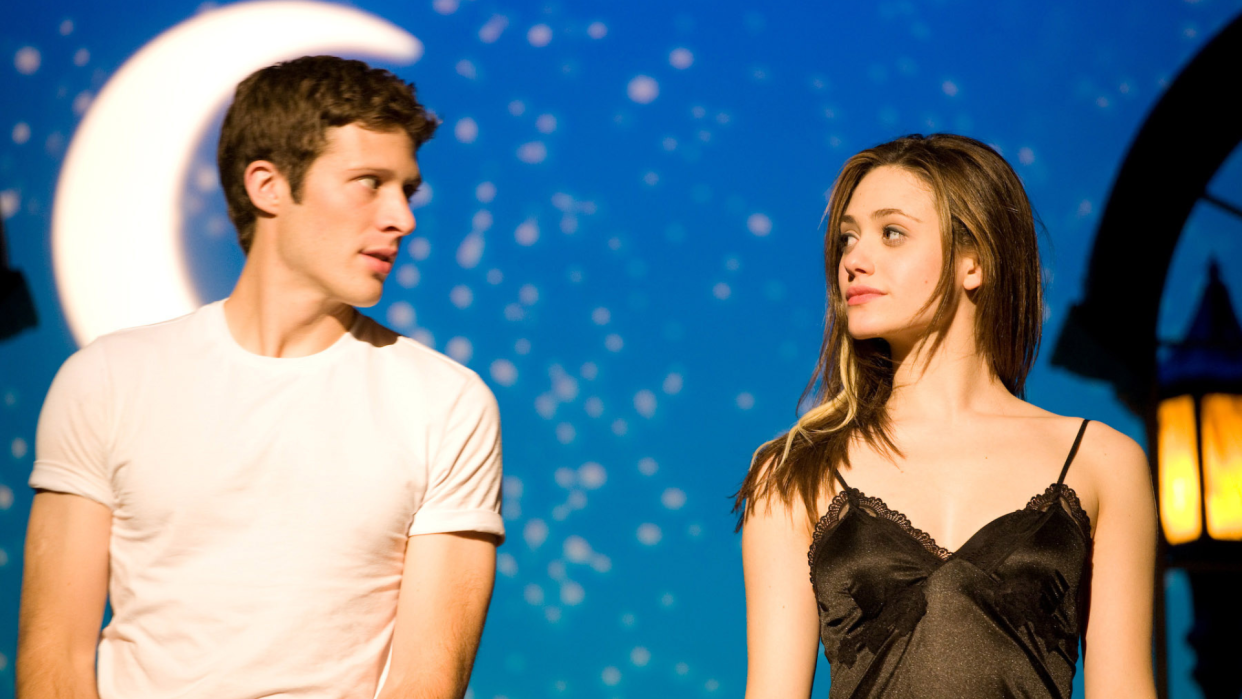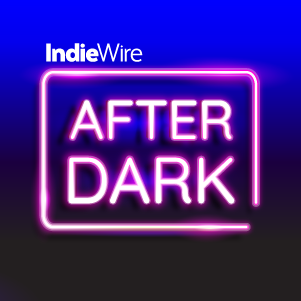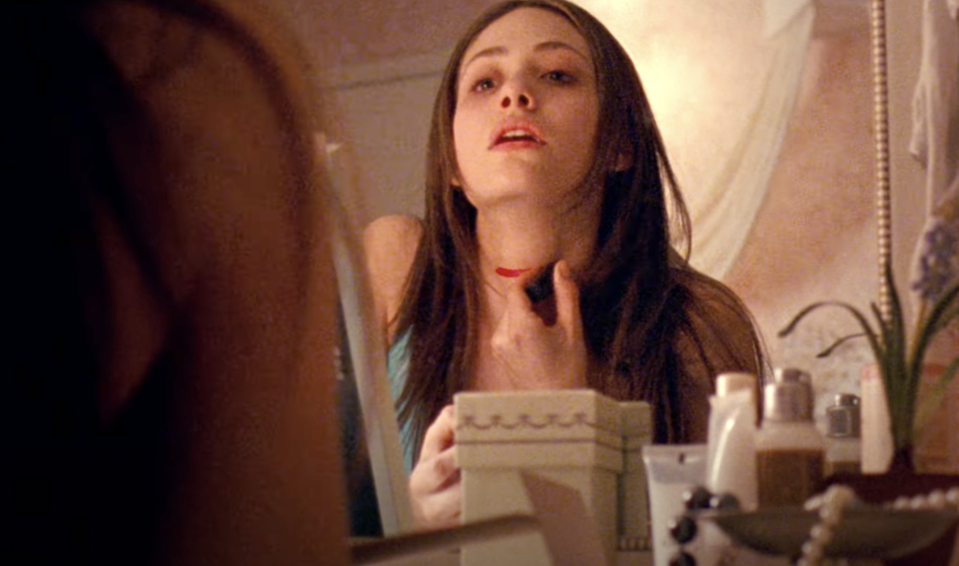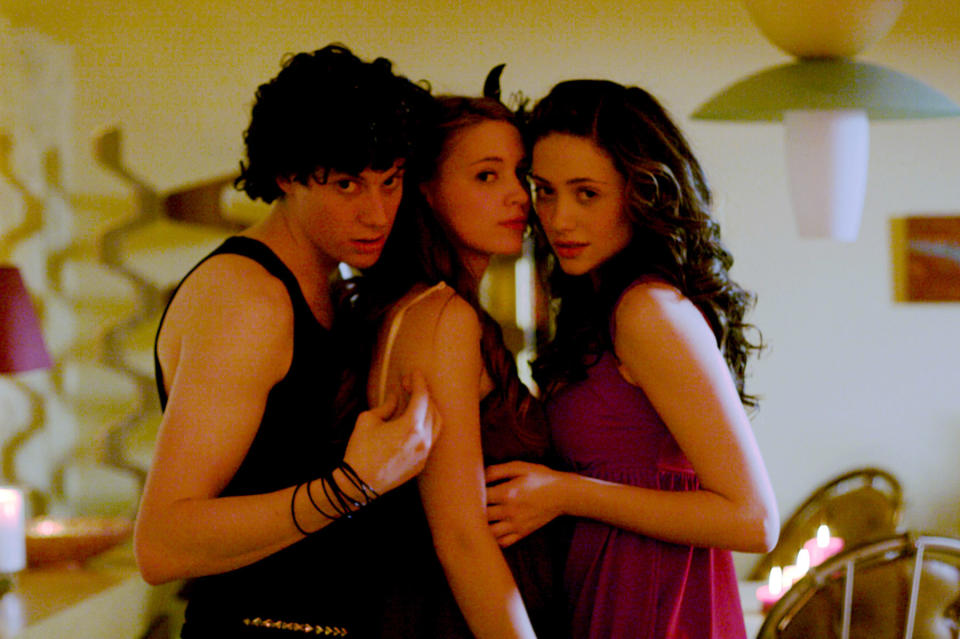‘Dare’ (2009): Emmy Rossum, Zach Gilford, and Ashley Springer Star in ‘Challengers’ for Theater Kids


On Friday nights, IndieWire After Dark takes a feature-length beat to honor fringe cinema in the streaming age.
First, the spoiler-free pitch for one editor’s midnight movie pick — something weird and wonderful from any age of film that deserves our memorializing.
More from IndieWire
Would Adding 'Apes' Character Koba Make Other Movies Better? Social Media Seems to Think So
Jerry Seinfeld Loses His Netflix #1 to Brooke Shields in 'Mother of the Bride'
Then, the spoiler-filled aftermath as experienced by the unwitting editor attacked by this week’s recommendation.
The Pitch: Discovering the Power of a Dick… Ahead of Its Time
Non-monogamy became a common topic of conversation this spring as Luca Guadagnino’s “Challengers” made any mention of pro tennis the conversational equivalent of a three-way sex invite.
On dating apps, searches for “open relationships” continued to rise in popularity just as reality television embraced multi-partnered dynamics through shows like Peacock’s “Couple to Throuple.” Even in 2024, polyamory isn’t outright “mainstream” by any stretch of the imagination(s). But as far as contemporary relationships are concerned, the “three’s company” approach to intimacy is showing up on screen and becoming accepted in real life more… and more… and more.
Director Adam Salky and screenwriter David Brind — whose debut feature film “Dare” from 2009 centers on a trio of sexually complex teens navigating their confused connection through a bad faith first attempt at non-monogamy — say they’ve been gratified by that artistic sea change.
“We were ahead of our time, whether we knew it or not,” Brind told IndieWire. “I think it made a lot of execs uncomfortable, but fuck it, that’s life. At some point, progress in storytelling is going to happen whether you fight it or not.”
“It’s a specific queer experience but it’s also a universal experience,” Salky said. “There’s always that one person, maybe two, where you just cannot believe how they generate the heat that they’ve generated, and you never thought you could ever warm yourself by that light.”
Premiering their moody meditation on adolescent sexuality more than 15 years ago at Sundance was “a dream come true,” the duo said. But their movie — a hidden gem of poly representation starring Emmy Rossum, Zach Gilford, and Ashley Springer as formative romantics jockeying for attention and safety in the background of a cutthroat theater class — was significantly “ahead of its time.”
Originally titled “Truth or Dare” before it was shortened to just “Dare,” Brind’s starting concept was pulled from his lived experience as a young man. (“I just had dinner with the ‘real’ Johnny in Philly last week, if you can believe it,” he mentioned mid-interview.) But the tense and tender story of aspiring actress Alexa (Rossum), best friend/stagehand Ben (Springer), and reluctant “A Streetcar Named Desire” scene partner Johnny (Gilford) emerged as a complete cinematic concept thanks to Columbia University’s Graduate School of the Arts, where Brind and Salky met as MFA students.
“I went to one of the screenwriting professors and I said, ‘Who are the best writers in the class?'” Salky recalled. “David’s name was mentioned on a very short list.”
Tasked with adapting Brind’s touching script about two boys flirting in a pool as a short film, Salky connected to the fledgling “Dare” material quickly and has been with its kaleidoscopic characters ever since. After garnering reasonable success with the 2005 short — and enjoying a warm reception when the feature hit Park City in 2009 — the director doubled back and finally posted the original collaboration (starring actors Michael Cassidy and Adam Fleming, beloved to “diehard” fans) online. Only then did Salky and Brind see their intimate drama, already adapted for the big screen, find its big audience.
“I put it on my YouTube channel and I forgot about it; six months later I got an email asking me if I wanted to monetize,” Salky recalled. As of writing, that version of “Dare” (2005) has been seen by just shy of 16 million people. “More importantly than the views, there were thousands of comments,” Salky said.
With supporting appearances from Rooney Mara, Alan Cumming, Sandra Bernhard, and more, “Dare” (2009) is the more midnight version of Brind and Salky’s kind-hearted universe; although it received another follow-up with the sequel short “The Dare Project” in 2018 that reunites the original cast to tremendous effect. Still, the feature version has a quotable sensationalism to it with lines like “When did you turn into Evil Light Boy?” and “I guess that’s what happens when you discover the power of a dick…” that bring to mind yesteryear favorites like “Heathers” and “Rebel Without a Cause.”
“I see midnight movies as movies that are breaking barriers and breaking taboos,” Brind said. “And ‘Dare’ was always inspired by the cult classics.” —AF
If you are a filmmaker with a lesser known work of fringe cinema that you would like to see featured on IndieWire After Dark, email Alison Foreman ([email protected]). Make it weird.
The Aftermath: A Film for the Throuple of Hall of Fame
I have only one regret watching “Dare” for IndieWire After Dark, and that’s seeing it a fraction too late for my other work.
As the credits rolled on the 2009 psychosexual teen drama, marrying the queasy relationship boundaries of Mike Nichols’ “Closer” with the intense theater kid energy of “Glee” Season 1, I closed my jaw (in a dropped state for at least half the film’s runtime) and forced myself to accept an embarrassment. I, IndieWire’s Curation Editor and de facto archival film expert, was wrong when I posted our site’s official ranking of The Best Threeway Relationship Films of All Time.
When I compiled that list in honor of Zendaya turning Josh O’Connor and Mike Faist into her onscreen boy toys, I never came across Salky and Brind’s hidden gem — despite its quietly triumphant portrayal of polyamory which no doubt pushed the boundaries of sexuality in indie coming-of-age cinema. Now, our list feels incomplete, because “Dare” definitely has a place in the throuple pantheon.
Currently, our selection of films leans a little too celebratory, prioritizing healthy functional poly depictions as an alternative to more normative film romances. That’s all well and good, but messy disaster-cules deserve their movie representation too, and the chemical wasteland of teenage hormones and ill-advised decisions that is the central “Dare” trio would more than patch that oversight.
“Dare” is in many ways the ideal film about teenage life, and I don’t say this because it’s a universally accurate portrayal of teenage life. There isn’t a high school theater program in the Milky Way that would let two students perform the rape scene from “A Streetcar Named Desire” (is there?), and while theater kids are indeed mostly horny weirdos, I personally wasn’t acquainted with any toxic triads when I was in my freshman year production of “The Crucible.”

Rather, “Dare” is an ideal depiction of adolescence because the film is erratic and all over the place in a way that mimics the emotional landscape of a high school senior even today. The tone wobbles from scene to scene and line to line, making for a viewing experience as consistently awkward and fumbling as Rossum and Springer’s geeks gone wild. (When Ben came out to Alexa by telling her “I had my first kiss…and gave my first blowjob,” my scream was loud enough that my roommate checked on me.)
And a large part of what makes “Dare” such a head trip to watch is the format, which divides the drama into three acts told from the perspective of each dissatisfied teen. It’s not a unique conceit to the film itself; that structure has appeared in various teen fiction like “Skins” and was used in Max’s “Generation” (no longer streaming) as an expression of its characters’ inability to see beyond themselves. But in “Dare,” that framing is particularly whiplash-inducing as each act further ramps up Alexa, Ben, and Johnny’s confused social speed and their fragile friendship goes off the rails.
Alexa’s segment is a fairly average — if unusually dour — rom-com about a type-A nerd girl learning to let her hair down and make out with the local bad boy. During Ben’s segment, the film becomes an undercooked but memorable coming-out story with some very adult considerations of consent that primarily reflect what make the short film popular. And Johnny’s segment, meanwhile, is a mental health drama about a depressed kid getting unwittingly trapped in a poly couple by two demonic nerds because he’s that desperate for real friends… with a borderline surreal central sex party scene that feels like what would happen if a Catholic Middle School staged a censored production of “Eyes Wide Shut.”

Adding to the film’s impossibly bizarre atmosphere is its casting, which throws in some absolutely wild cameos from Alan Cumming as a negging theater lecturer [AF: a part that was originally written for Parker Posey, per Brind…] who lectures Alexa on the importance of being a slut and Ana Gastyer as a robotic therapist mom. Still, the film rests on the central trio, and it’s a testament to the actors’ talent that they’re able to find emotional meaning in the absolute murk of the film’s love triangle. Rossum’s Alexa irks and Springer’s Ben is far more creepy than I think the filmmakers intended, but the actors are both appealing and vulnerable enough to generate some empathy.
For much of the runtime, I thought Gilford was slightly miscast; with no disrespect to the once and future Matt Saracen, he doesn’t quite have the sensual screen presence needed to make his pull on Alexa and Ben totally scan. [AF: At least he was a safer choice than Ed Westwick, who Brind and Salky told me dropped out of the role shortly before production…] Gilford is much better when the film delves deeper into Johnny’s sensitive side, and while the setup (rich kid with a mood disorder and an absent dad) is a touch cliché, the “Friday Night Lights” actor delivers an emotional breakdown at the film’s climax that lands like a bomb.
“Dare” isn’t even close to the type of film I expected to be exposed to when I agreed to participate in IndieWire After Dark; your quintessential “Rocky Horror Picture Show,” this Sundance drama is not. However, I would wholeheartedly agree with the suggestion that it is a midnight movie. The term encompasses a broad swath of cinema, but in their most basic definition, great midnight movies are an exaggerated expression of authentic emotions; a sort of distorted funhouse mirror of our world and, for teenagers of a certain type, “Dare” is undeniably that. —WC
Notes from Adam Salky and David Brind
I’m forever curious where the “Dare” story will go, and how we can continue to fill the fans with what we always intended: hope and connection. I love stories about self-discovery. To that end I’m developing a host of projects for film and TV across genres tying into that passion, including a series that explores the evolving nature of masculinity, a key theme in “Dare.” Full list available upon request! —AS
Ben and Johnny live in my head all the time. I think their story, now in their 40s, has a unique queer “Boyhood” storytelling potential. I have written something new. I am working at the oft slow pace of a writer to get it right with the OG team intact. Online petitions and campaigns welcome. —DB
Those brave enough to join in on the fun can stream “Dare” (2009) on Tubi, Kanopy, or the Strand Releasing Prime Video Channel; the feature film is also available to rent or buy on most VOD platforms. To watch the two “Dare” shorts, you can find “Dare” (2005) on YouTube and “The Dare Project” (2018) on Vimeo. IndieWire After Dark publishes midnight movie recommendations at 11:59 p.m. ET every Friday. Read more of our deranged suggestions…
Best of IndieWire
The 13 Best Thrillers Streaming on Netflix in May, from 'Fair Play' to 'Emily the Criminal'
The Best Father and Son Films: 'The Tree of Life,' 'The Lion King,' and More
The 10 Best Teen Rebellion Films: 'Pump Up the Volume,' 'Heathers,' and More
Sign up for Indiewire's Newsletter. For the latest news, follow us on Facebook, Twitter, and Instagram.
